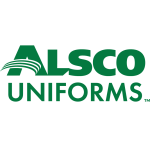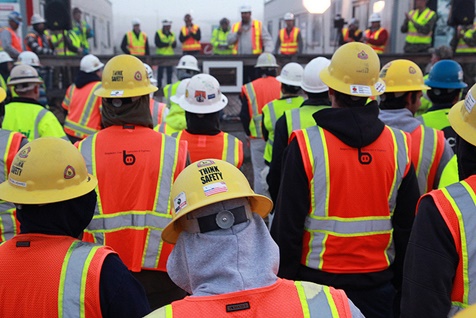Health and safety systems have been around for years, so why do we still have injuries and fatalities in the workplace in Australia? A large number of injuries are a result of an ’at risk behaviour’ which could have been avoided.
Once investigations into incidences are completed in most cases the ‘at risk behaviour’ had been going on for some time and Management and employees chose to walk past the ’at risk behaviour’ which set the standard. So whether it’s in business or in your personal life and surroundings, if you chose to walk past, then that is the standard you choose to accept.
In Australia, we have come a long way since the 80’s and there is Legislation, Australian Standards, Codes of Practice that can be followed to ensure that acceptable standards are documented for businesses to follow. So with all these documents available, why are injuries and fatalities still occurring?
There are a number of reasons and it is also dependent on the industry and risks involved, but there is documented evidence that if a Workplace Health and Safety (WHS) Management System is implemented, followed, reviewed then businesses will see the long-term benefit through the reduction of injuries. Besides injuring fewer people, there are also financial and productivity rewards for the business.
What Are The Legislative Requirements In Australia?
In Australia, every state had its own WHS Legislation, but in 2011 there was the introduction of the Safe Work Australia Harmonisation Legislation. What this means is the majority of states have come on board with the new legislation except Victoria and Western Australia.
The reason for the introduction of the Harmonisation Law is to have one standardised approach to Workplace Health and Safety across Australia. The easiest way to document a WHS Management System is to use the Australian Standard AS/NZS4801:2001 Occupational Health and Safety Management System as a guide for both structure and implementation.
This is read in line with relevant legislation as although the legislation has been harmonised, there are still state variations where necessary.
What is a WHS Management System?
A WHS Management System is designed to ensure effective management of health and safety with a coordinated and planned approach.
A WHS Management System is a bank of documents, including Policies, Procedures, Safe Work Procedures and Forms which collectively enable a business to effectively and consistently manage the health and safety of their workers.
What Are the Benefits of Having a WHS Management System?
Simply implementing a WHS System doesn’t assure compliance with Legislation but it enables businesses to implement a framework to follow and continuously improve.
There are many benefits from implementing a WHS System, some of which are listed below.
- Reduce injuries and injury-related costs through accurate reporting and management of incidents and return to work programs.
- Improving business opportunities by being able to meet requirements of the tender documents from large organisations such as Government and Blue Chip Companies.
- Providing systems to be able to manage safety performance.
- Being able to demonstrate how legal requirements are met.
- Enhancing the organisation’s reputation.
- Improved productivity from a reduction in injuries.
How to Implement an Effective WHS Management System?
An effective system has Policies, Procedures, Forms and Guideline Documents that are written for all workers (including contractors) to follow.
Ensuring
- hazards are identified,
- risk assessed,
- workers are trained and
- safe work procedures
are in place is just the start. Ongoing review is vital to properly assess how the system is working and is important for continuous improvement.
How do I verify if my WHS Management System implementation has worked?
A great way to assess the implementation of your WHS Management System is by carrying out a Gap Analysis Audit. A Gap Analysis Audit is a great way to see what you have in place, what needs updating or what is missing from your safety system. The best way to carry out a gap analysis is basing the audit on AS/NZS 4801 Standard.
These audits are best conducted by an independent person to your organisation to ensure all areas are covered and nothing missed – fresh set of eyes.
How is Your Performance Tracking?
How many Recordable Injuries have you had in your business in the last 12 months?
Did you know that for every recordable injury (requires medical treatment, lost time injury, fatalities) studies estimate there have been 10 near misses and 1000 at risk behaviours leading up to the incident!
Tracking incidences are a great way to keep on top of what is happening within the business as it allows for trends to be identified and controlled consequently reducing the chances of a recordable injury.
How do You Identify Potential Hazards Within Your Organisation?
There are a number of tools around to identify hazards and a very simple method for Supervisors and Managers is by ’observation’. By this, we mean taking note of what staff are doing, how they are working and not choosing to walk past an unsafe behaviour. Other methods are:
- Incident reports and an analysis of trends
- Hazard observations
- Audits
- Inspections
- Risk assessments
- Maintenance records
- Toolbox talks
- SWMS (Safe Work Method Statements)
So What is SWMS (Safe Work Method Statements)?
Under the new legislation, SWMS were introduced to replace the old JSA (Job Safety Act). SWMS identify the tasks, risks, hazards from performing each step of a specific task and provides risk scoring and controls in place to minimise or eliminate the risk.
Need help with your Safety System?
Everything OHS was established in 2008 and has a team of Consultants that have extensive experience in implementing WHS Management Systems, Quality Assurance and Environmental Systems. We have helped 1000’s of businesses across Australia big and small to make their businesses safer.
For all Alsco customers, we are offering a 10% discount across our consulting range so visit www.workplace-safety.com.au and let us help your business improve its performance, protect your workers and comply with relevant legislation.
Remember that ‘What you choose to walk past, is the standard you choose to accept!’

Alsco would like to thank Tracey Cameron, the Safety Consultant/Director of Everything OHS, for this article. Everything OHS services include Gap Analysis, Environmental Audit and Environmental Consulting. Visit Everything OHS to learn more.
Emergencies at the workplace can happen anytime, is your workplace first aid ready for emergencies and injuries? For more tips on creating a safer workplace subscribe to Alsco Greenroom.
Photo Courtesy: NAVFAC

